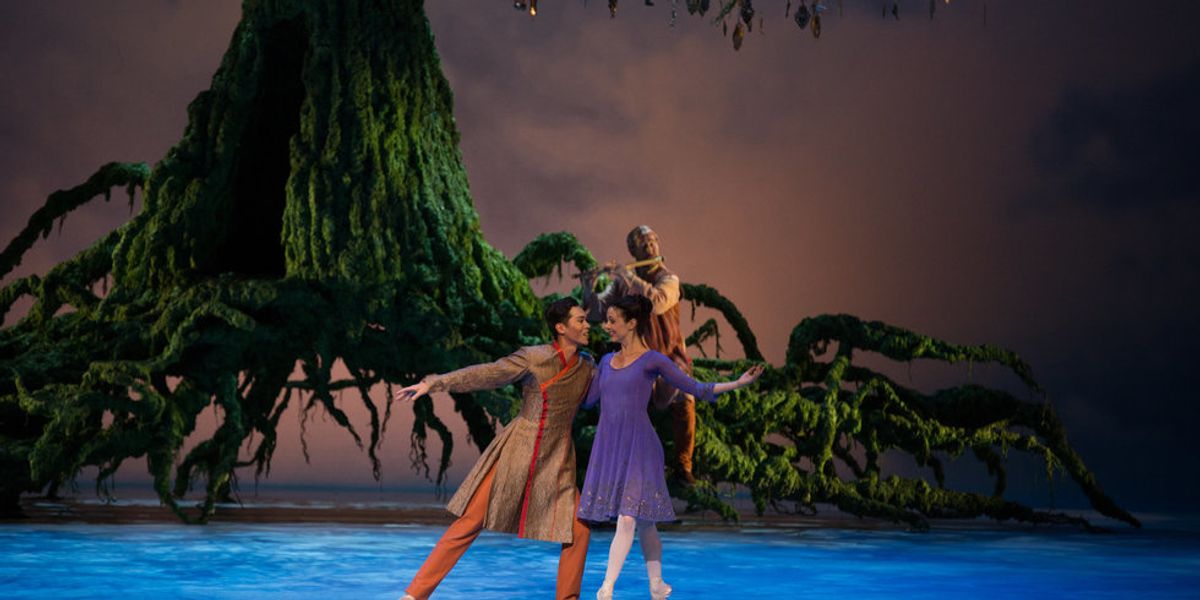10 Reasons Wheeldon’s Winter’s Tale Will Last
Christopher Wheeldon’s The Winter’s Tale is that rare accomplishment: a brand new story ballet that speaks to today’s audience. I saw two excellent casts with National Ballet of Canada (it premiered with co-commissioning partner The Royal Ballet in 2014) at Lincoln Center Festival July 28 and 29, and wish I could see it many more times. Wheeldon has taken this “difficult” play by Shakespeare and turned it into a beautiful, poignant ballet. The narrative covers complex ground: King Leontes jealously accuses his pregnant wife, Hermione, of infidelity with his friend King Polixenes, resulting in the demise of Leontes’ wife and son and the banishment of his newborn daughter. The situation is resolved sixteen years later with the marriage of Leontes’ long lost daughter to Polixenes’ son and the revelation that Hermione still lives, but not without a realistic dose of strife and remorse ahead of the family’s reunion. Audiences sat rapt during both evenings. It is not a fairy tale trapped in the past but rather has a universal relevance. Here are some reasons why I think The Winter’s Tale will live on for a long time.
1.
The music by Joby Talbot is enchanting from the first note to the last. It helps set up a caring community onstage but also drives the narrative tension.
2.
Wheeldon’s choreography tells the story of King Leontes’ jealous rage and its destructiveness with boldness and sensitivity, giving the ballet intimacy even in a big theater.
3.
King Leontes has a mad scene every bit as riveting as Giselle’s. His fingers curdle, he looks crazed, and he lurches with rage and disorientation.
4.
The recurring motifs come through on repeated viewing. In the most frequent movement theme, the arms reach overhead, one hand holding the other elbow in an “h” shape, as if to say, “This is who I am.” This port de bras is done gently, with aggression, or with desperation depending on the character’s mood.
5.
The inventiveness that Wheeldon wields so naturally in his abstract ballets finds its way here. The heartbreaks, the battles, the friendship turning sour, all are choreographed in a way that is fresh. The tricky partnering for the young lovers Perdita and Florizel, as well as Leontes’ brutality toward his wife Hermione, reach out and grab you.
6.
Wheeldon breaks the fourth wall, adding to the intimacy. At certain moments, the crowd onstage cheers “Yay!” and claps their approval, or sighs “Awww” when the young couple gets engaged. (I remember the “awww” from his Cinderella too; it reminds us that dancers have voices.) He also brought a band of real musicians onto the stage, which allows us to feel more part of the action.
7.
Wheeldon (with the help of Shakespeare) has created plum roles that are emotionally complex and technically challenging. Piotr Stanczyk’s King Leontes was aggressive and sharp whereas Evan McKie‘s interpretation was more inward, as though invaded by demons. The role of Paulina, the head of Queen Hermione’s household, is as warm and virtuous as the Lilac Fairy, but she attacks Leontes when she’s so angry and grief-stricken that she forgets her place as a servant.
8.
The set design: When the curtain opens on Bob Crowley’s magnificent Wishing Tree in Act II, with its roots splayed above ground and its branches bejeweled with pendants of hope, you know that this Bohemia is a whimsical land.
9.
The dancing! The group flow in Act II’s Bohemia reveals a vibrant, loving community—quite the opposite of the royal jealousy and revenge shown in Act I. The colorful shepherds and shepherdesses entwine in ways that echo the young lovers Perdita and Florizel. When the shepherds sneak in some capoeira moves or when the music veers into an Irish gig, you feel glad that this production doesn’t lock the setting into one particular period.
10.
Some scenes seize you with their violent tension and others are so touching that you melt with heartbreak or joy. One leaves the theater emotionally sated.




